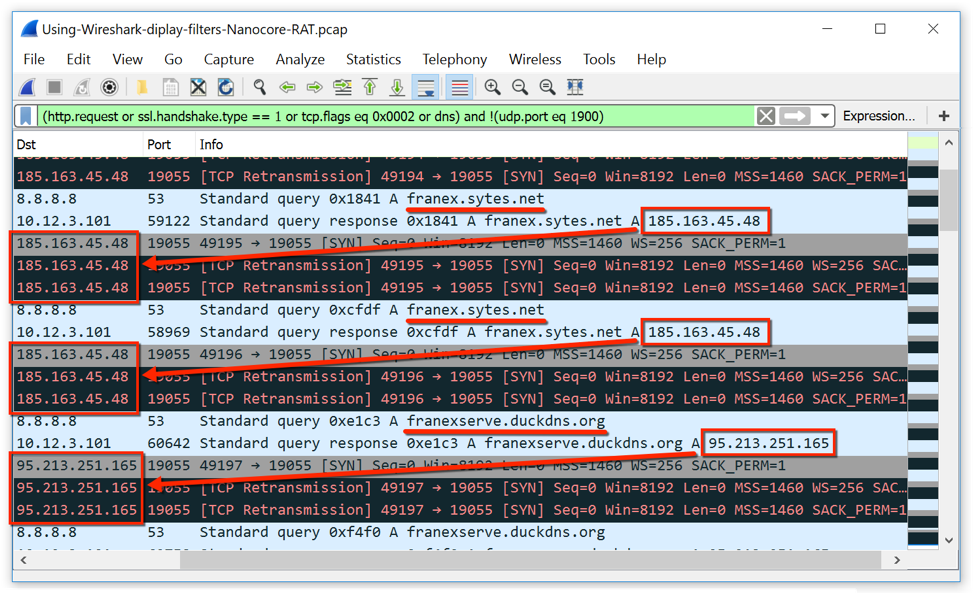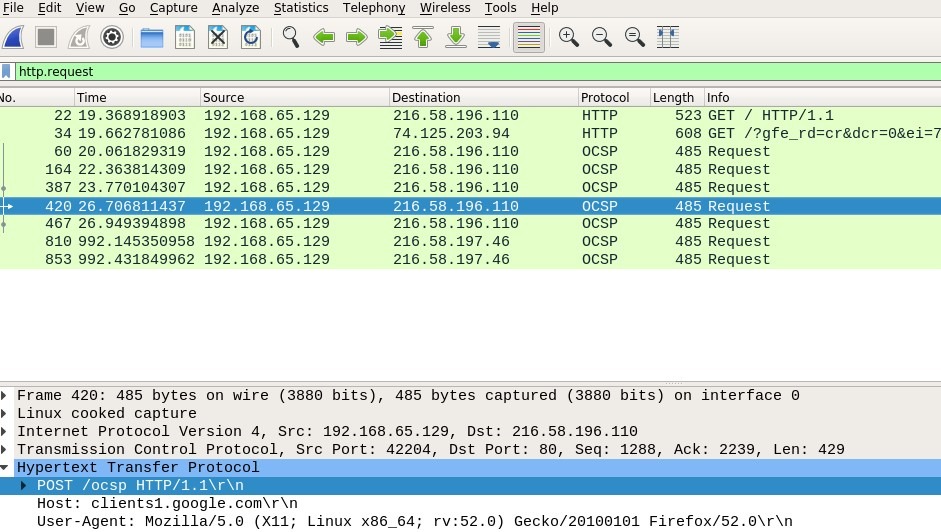

Today I will discuss two ways to filter in Wireshark: display filter and capture filter.ĭon’t get me wrong – Wireshark is well documented. When running a full-bore packet capture session, you may find that data are accumulating quite rapidly and likely you are obtaining much more than you want to look at. Since we don’t live in a perfect world, I wanted to demonstrate a little piece of the freely downloadable network packet sniffer called Wireshark. This translates to "pass any traffic except with a source IPv4 address of 10.43.54.65 or a destination IPv4 address of 10.43.54.65".In a perfect world, there would be no need to monitor network traffic looking for interlopers. This translates to "pass all traffic except for traffic with a source IPv4 address of 10.43.54.65 and a destination IPv4 address of 10.43.54.65", which isn't what we wanted. Filter out any traffic to or from 10.43.54.65 The same is true for "tcp.port", "udp.port", "eth.addr", and others. For example, "ip.addr" matches against both the IP source and destination addresses in the IP header. This translates to "pass any traffic except with a source IPv4 address of 192.168.65.129 or a destination IPv4 address of 192.168.65.129"ġ5.Some filter fields match against multiple protocol fields. TCP buffer full - Source is instructing Destination to stop sending data tcp.window_size = 0 & != 1ġ3.Filter on Windows - Filter out noise, while watching Windows Client - DC exchanges smb || nbns || dcerpc || nbss || dns

Show only traffic in the LAN (.x), between workstations and servers - no Internet: ip.src =192.168.0.0/16 and ip.dst =192.168.0.0/16ġ2. Show only SMTP (port 25) and ICMP traffic: tcp.port eq 25 or icmpġ1. Display http response code of 200 in network traffic = 200ġ0. Show traffic which contains google tcp contains googleħ. display all protocols other than arp, icmp and dns !(arp or icmp or dns)Ħ. Display traffic with source or destination port as 443 tcp.port = 443ĥ. Display tcp and dns packets both tcp or dnsģ.


 0 kommentar(er)
0 kommentar(er)
